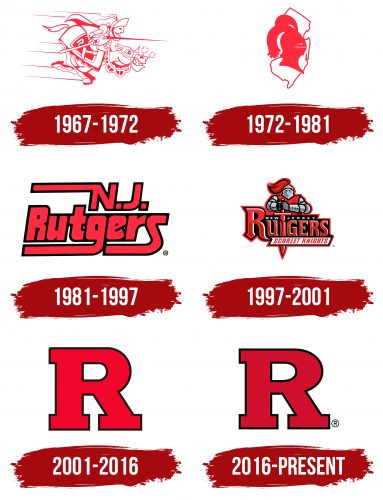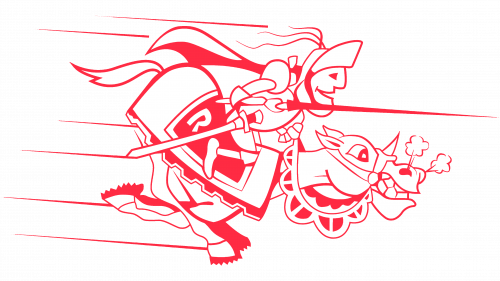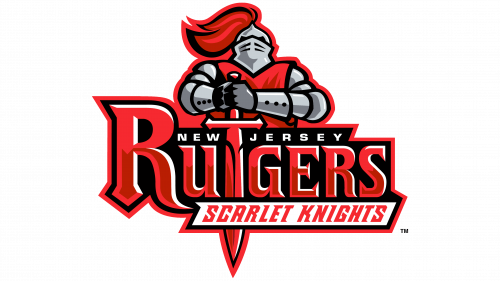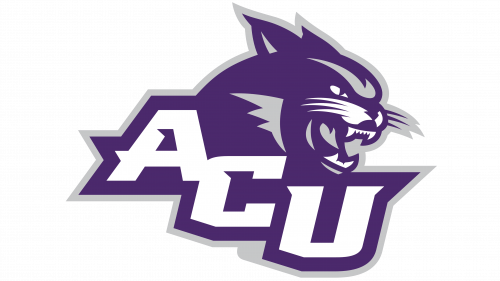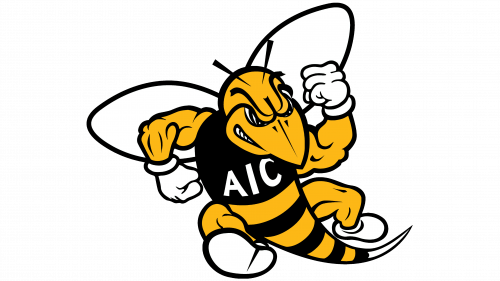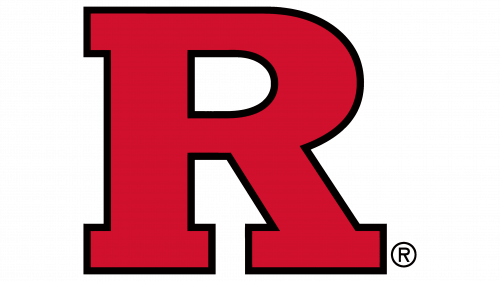 Rutgers Scarlet Knights Logo PNG
Rutgers Scarlet Knights Logo PNG
The Rutgers Scarlet Knights logo embodies the athletic spirit of Rutgers University’s teams. The emblem conveys the enthusiasm with which students compete, their drive for victory, and their tireless pursuit of the coveted prize.
Rutgers Scarlet Knights: Brand overview
The history of Rutgers University’s sports team, the Rutgers Scarlet Knights, dates back to the mid-1800s and is intimately linked to the growth of university athletics in the United States. Rutgers University, established in 1766, has a unique role in American football history. Rutgers and Princeton played the first intercollegiate football game on November 6, 1869. This historic game was won by Rutgers 6-4. The institution is a pioneer in collegiate football because this game is regarded as the origin of the sport in America.
At first, the sports teams at Rutgers didn’t have an official moniker. They were called “The Scarlet” because of their uniform color. Much later, in 1955, a poll conducted among students and alumni officially established the moniker “Scarlet Knights.”
The football program started to take off in the early 1900s. Neilson Field, constructed in 1910, served as the football team’s first permanent home. The Scarlet Knights’ home field, Rutgers Stadium (now SHI Stadium), became the team’s new home in 1938.
Numerous sporting achievements characterized the 1920s and 1930s. The basketball team won their first conference title in 1924. The university’s wrestling program also grew during this time and eventually became one of the best.
An important time in the team’s history was the 1950s. Following the official nickname, a logo with a knight on horseback was designed in 1955 to represent the university’s athletic teams.
The institution expanded its athletic offerings in the 1970s. Following the adoption of Title IX in 1972, a concerted effort was made to expand women’s sports programs.
1976 was a noteworthy year for the football program. With an 11-0 record at the end of the season, the squad maintained its title as the best in university history.
The advent of the Big East Conference in 1991 signaled the start of a new era for the athletic departments. This membership raised the team’s profile and created new competitive opportunities.
There were notable achievements in women’s basketball during the 2000s. Under head coach C. Vivian Stringer, the squad frequently competed in the NCAA tournament, making it to the Final Four in 2000 and 2007.
One of the best football seasons in recent history occurred in 2006. The team won the Texas Bowl, completing the season with an 11-2 record and winning the university’s first-ever bowl.
In 2012, the institution announced its move from the Big East Conference to the Big Ten, one of the most prominent conferences in collegiate athletics. After completing the transition in 2014, the sports programs began a new chapter in their history.
2014 marked a significant milestone as the university formally became a member of the Big Ten Conference. This choice presented new challenges and opportunities for more intense competition.
The transition in football proved challenging. Tougher opposition hindered the squad’s performance. Chris Ash took over as head coach in 2015, but the team failed to progress under his direction.
The university reinstated Greg Schiano as head football coach in 2019. Schiano was responsible for revitalizing the program, which he had previously led from 2001 until 2011. Fans were happy to have him back and hoped for better outcomes.
After joining the Big Ten, the men’s basketball team encountered additional difficulties. Things started to improve in 2019 when Steve Pikiell was named head coach. The team made it to the NCAA tournament for the first time in a long time during the 2020–2021 campaign.
Under the great coaching of C. Vivian Stringer, the women’s basketball team maintained its winning ways. In 2015, Stringer became the second female coach to win 1,000 games in NCAA Division I history.
The wrestling program continued to produce impressive results. In 2019, Nick Suriano became the university’s first-ever NCAA wrestling national champion.
The lacrosse program was also successful. In 2016, the men’s team made its first-ever trip to the NCAA Final Four.
The institution completed a significant investment in 2019 to update its athletic facilities. The new multipurpose sports complex, the RWJBarnabas Health Athletic Performance Center, has greatly enhanced the environment for training and competition.
Despite the challenges of moving to a more competitive conference, the university continued to emphasize its athletes’ academic achievements. The institution was frequently acknowledged for its student-athlete’s outstanding academic performance.
The university commemorated the inaugural intercollegiate football game’s 150th anniversary in 2020, emphasizing the game’s significant contribution to the growth of collegiate athletics in America.
Joining the Big Ten also had monetary advantages. The institution increased its investment in sports programs’ growth thanks to increased revenue from television broadcasts and other sources.
Under the direction of Greg Schiano, the football team made progress. The team won three Big Ten conference games during the abbreviated 2020 season, a major improvement over prior campaigns. The group consistently developed in 2021, finishing the season with a 5-8 record, including three conference victories.
The men’s basketball squad made considerable progress. Under head coach Steve Pikiell, the team made it to the second round of the NCAA tournament in 2020–2021—their first appearance in the tournament in thirty years. This accomplishment confirmed the program’s development approach and represented a significant turning point.
The women’s basketball team carried on its winning streak. After 50 years of coaching, including 27 at the institution, renowned coach C. Vivian Stringer announced her retirement in 2022. Her departure marked the end of the women’s basketball program era.
The wrestling program maintained its impressive performance. In 2021, Sebastian Rivera became the NCAA national champion in his weight class, continuing the successful legacy of the wrestling department.
Progress was also made in the lacrosse program. The men’s team demonstrated its ability to compete at a high level by qualifying for the NCAA tournament once more in 2021.
The institution continued making investments to expand its athletic facilities. Plans to further modernize the football stadium and other sports facilities were unveiled in 2021.
The university persisted in highlighting its athletes’ academic accomplishments. Numerous teams received recognition in 2021 and 2022 for the outstanding academic achievement of their student-athletes.
In 2022, the university won victories in multiple Olympic sports. At the national level, university athletes excelled in swimming, track and field, and other sports.
Being part of the Big Ten helped the athletic department maintain a better financial standing. Increased revenue from television broadcasts and other sources allowed the institution to continue funding the growth of its athletic programs.
The athletic programs have a rich tradition of producing exceptional athletes, many of whom have gone on to have prosperous careers in professional sports. These include basketball player Cappie Pondexter, football players Ray Rice and Mohamed Sanu, and numerous others.
The athletic departments are still growing, aiming for fresh successes while upholding historic customs dating back to the early days of university athletics in the United States.
Meaning and History
What is Rutgers Scarlet Knights?
These are the sports teams of Rutgers University, New Jersey’s leading public research university. They include football, basketball, fencing, rowing, and other sports teams competing in the rigorous Big Ten Conference. The program’s name is linked to the university’s history, symbolizing the red color, courage, and resilience of medieval knights. Fans, dressed in red, passionately support their teams at home games, whether at the Jersey Mike’s basketball arena or the SHI football stadium. The teams have succeeded in various sports, including field hockey, women’s soccer, and wrestling.
1967 – 1972
The Rutgers Scarlet Knights logo embodies a knightly spirit that sets the tone for the game. This means that the primary purpose of the visual identity is to inspire team members before competitions rather than intimidate opponents. The emblem conveys this mood: cheerful, vibrant, motivational, and even slightly caricatured. This style fits well within the sports theme, as creating a positive atmosphere is essential.
The emblem is based on the image of a knight charging on a spirited horse during a competition, as indicated by the lance pointed forward. According to legend, this is the Scarlet Knight, named Sir Henry. But he didn’t appear immediately; the university previously used a different mascot—a rooster and, later, a leopard. Only after criticism from opponents, who mocked the teams as “chickens,” was the visual identity adorned with a brave rider in armor. He wears armor and a helmet with the visor raised, symbolizing the warrior’s courage, as he doesn’t hide his face but confidently looks his opponent in the eye.
The horse is also fully outfitted, with a saddle, blanket, and reins decorated with semicircular flags. Though steam billows from its nostrils, it looks lively and spirited, galloping confidently to face challenges. On its side is a single “R”—the first letter of the athletic department’s name. This uppercase, bold, and grotesque symbol stands against a solid red background.
1972 – 1981
The key characteristic of the Rutgers Scarlet Knights logo from this period is abstraction. This concept forms the basis of the graphic composition, essentially consisting of two elements. The designers were tasked with creating an emblem that meets several important criteria, including authenticity, historical roots, and originality. The result meets all three requirements, as it presents:
- the state of New Jersey, where Rutgers University is located (to which the athletic department belongs);
- a knight’s helmet with a closed visor and a plume of lush feathers (symbolizing the knight Sir Henry).
The state is positioned vertically, and its administrative boundaries are outlined in fine detail. It is mostly white and serves as a background for the team mascot, the Scarlet Knight. The knight’s helmet is red—contrasting, vibrant, and attention-grabbing, highlighting the athletes’ drive for leadership. Red is also considered a high-energy color, symbolizing a desire to dominate the sports field.
Combining these two elements results in a futuristic style, as the red knight serves as an artistic allegory that vividly conveys the teams’ concept, character, and approach to sports, rivals, and homeland. The logo also distinctly conveys patriotism, directly represented by the state map, showing the origin of the athletic department.
1981 – 1997
This version of the Rutgers Scarlet Knights emblem stands out significantly in style and structure. It is text-based and consists of two lines: “NJ” and “Rutgers.” Yet, the knightly spirit is still present, represented by elongated strokes that resemble horizontally extended spears of a medieval warrior competing in a tournament. These strokes are as powerful and sleek as their handles, though they lack a pointed tip, which appears illogical. Three letters feature these extensions:
- The uppercase “N”;
- The lowercase “g”;
- The final “s.”
The other glyphs lack serifs, making them look extra bold. At the same time, all characters are equally slanted and outlined: they are bordered by black lines that merge in some areas, creating the impression of a single continuous line. This graphic technique emphasizes team members’ unity, cohesion, and shared drive for victory.
Black complements red—the official color of the Rutgers Scarlet Knights—exceptionally well. This duo vividly conveys the intensity on the field, resilience, strength, and intense emotions. Combined with the elongated tails that form the upper and lower borders of the inscription, these contrasting colors lend the logo a highly businesslike and stern appearance.
The first line is short, representing the abbreviation of the state name, New Jersey. Next to each letter is a large square dot that blends with the letter. In the second line, the inscription is longer and distinctive, as the glyphs lack internal gaps.
1997 – 2001
The Rutgers Scarlet Knights teams decided to return their logo’s old design, which features their mascot—the Scarlet Knight named Sir Henry. This time, the character appears courageous and strong. The knight, clad in silver armor and helmet, holds a sword pointed downward, with its blade replacing the letter “T” in the word “Rutgers.” This combination is highly effective, clearly conveying the concept and demonstrating the athletes’ determined character.
A plume of feathers flows from the helmet, adding the emblem’s missing sense of movement. This dynamic element also appears in the letters: uppercase symbols in the middle line feature dark red stripes with pointed ends resembling a knight’s sword fragments. A red background complements them. Paired with white wavy elements in single highlights, they appear intense due to the strong contrast between illuminated edges and the darkened center. The most prominent letter is “R,” designed as an initial.
There are also two additional lines. The top line contains the name of the state where the athletes are based. The letters there are small, geometric, sans-serif, and spaced widely apart. The lower row is in italicized font with sharp, spiked serifs pointing to the left. These align well with the sword, where similar triangles appear on the hilt. To make the text stand out clearly, designers provided individual backgrounds for each line: black for white letters and white for red ones.
2001 – 2016
The teams adopted a text-based emblem with a single glyph: the first letter of the word “Rutgers ” to demonstrate tremendous strength and courage. “This glyph presents the athletes as powerful, assertive, and unyielding players. The concept remained traditional, while the visual identity became modern by meeting key graphic demands of the time: brevity, minimalism, and simplicity.
The Rutgers Scarlet Knights logo looks incredibly straightforward and even somewhat ordinary, as the team’s leadership pursued clarity to the point of triviality. This type of emblem is among the most common in the sports world, so the university introduced nothing new. Now, team members compete in uniforms featuring a typical letter-based emblem with characteristics of:
- a monolithic structure,
- a blocky style,
- an ultra-bold font,
- an outlined border.
Additionally, the red color is bright, energetic, and appealing. It doesn’t appear aggressive because it harmonizes well with the black outline. The dark frame maintains high contrast and serves as a restraining factor, embodying the idea of uncompromising competition for top positions.
Another typical element of the letter emblem is massive serifs. They are also present here, solidly supporting the wide vertical strokes. Horizontal rectangles balance the top, effectively filling out the lower tier.
2016 – today
The update to the Rutgers Scarlet Knights logo centers on a color change. In this way, the designers refined the concept of the athletic division and highlighted the teams’ unique characters.
Red lost its aggressiveness, though it remains the official color. Its evolution from scarlet to crimson reflects the athletes’ professional growth, emphasizing thoughtful strategy over blind aggression in the game.
The tightly fitting frame conveys restraint and strict adherence to rules, suggesting the players’ skill development and professional maturity. The black line combined with the crimson color avoids the sense of fatal inevitability that red previously implied.
The large letter is rendered geometric, featuring various angles with minimal rounding. The wide inner spacing prevents the bold strokes from merging, preserving the glyph’s precise configuration.
While the emblem appears clean and smooth, it is also standard. It lacks the individuality that would represent the Rutgers Scarlet Knights athletes. Only the color remains from the knight image, and even that was changed over time, threatening a complete departure from the original idea. It seems the athletic division has distanced itself from Sir Henry (the Scarlet Knight) in the logo, as it previously did with two other mascots—the rooster and the leopard.
